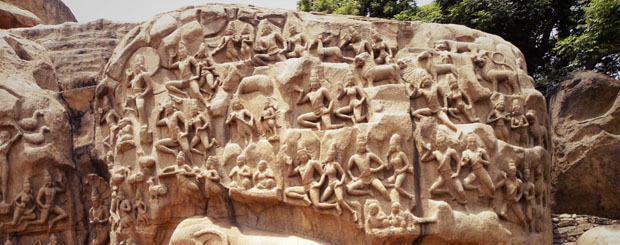The grandeur and beauty of Kanchipuram

No wedding is solemnized in Southern part of India without the bride wearing a precious Kanchipuram silk sari. A visit to Kanchipuram, just a two hour’s drive from Madras will take you on a magical tour of history, culture, religion and art.
Kanchipuram is one of Indias Seven Sacred cities. During the 6th to 8th century, the city was the capital of the Pallava Dynasty. Later on it became under the Chola dynasty, the Vijayanagar Kings and other reigns.
All of them had left their mark on the city, adding on to its rich legacy. Kanchipuram has always been the centre of religious learning, art, culture and literature of Tamil culture.
The predominant place of visit at Kanchipuram is of course the grand Shiva temple which is believed to have first been built in 600 AD. Over the centuries, it had been brought down, rebuilt and renovated by both Pallava and Chola kings.
The temple complex is spread over a sprawling 40 acres. The entrance tower touches the sky with its height of 190 ft. The Ekambareshwarar temple is the predominant temple at Kanchipuram. The Ayiram Kaal Mandapam or the Hallway of 1000 pillars is a salient feature of the temple.
This temple is dedicated to Lord Shiva who manifested as “earth” among the five elements – the Pancha Bhootas. This Shiva linga moorthy is known as the Prithvi Linga. Most other Shiva temples have a separate shrine dedicated to Godess Parvathy, the consort of Lord Shiva. Contrasting to this is the Ekambareswarar Temple which doesn’t have a separate shrine dedicated to Godess Parvathy.
The Temple is blessed with 1008 Siva lingams and any devotee who offers prayers to each of the Shiva Linga is believed to reach utmost peace akin to moksha. Another astonishing aspect is the mango tree at the temple complex which is believed to be 3500 years old. According to legend, Lord Shiva commanded the four Vedas – Rig, Sama, Yajur and Atharava – to personify as the four branches of this one large mango tree, signifying the unity of the four. Interestingly, it is said that the four branches of the mango tree yield four different varieties of mangoes!








